Purple and lilac violets: description of varieties and tips for care
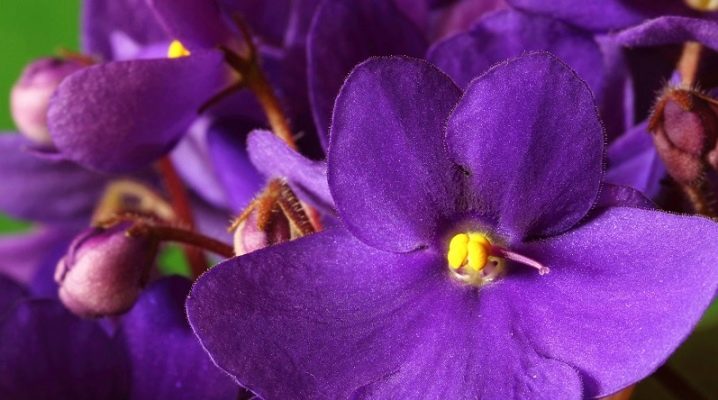
Lilac, violet and dark violet uzambara violets amaze the imagination with the saturation and depth of colors. With proper care, these unpretentious houseplants can captivate their owner with lush and abundant flowering most of the year. What varieties of lilac and purple saintpaulias are popular with flower growers? What are the rules for caring for them?
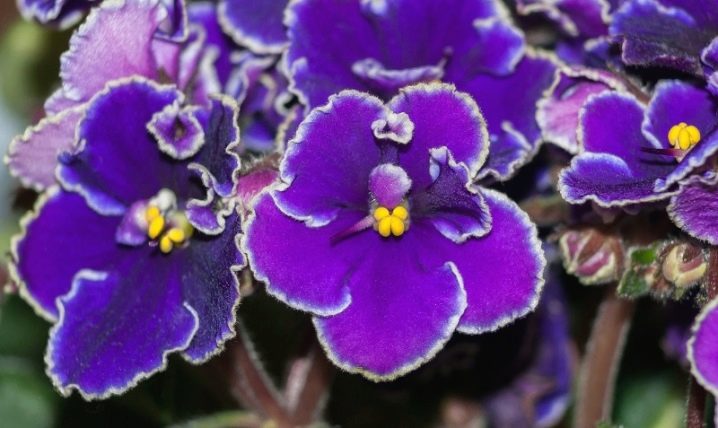
Description of varieties
"LE-Lilac rain" - variety variegated with large double flowers of a delicate lilac color and fancy dark purple stains. The diameter of the flowers can vary from 4.5 to 5.5 cm. The leaves are large, uniform emerald color with light beige wavy edges. The sockets are characterized by extraordinary compactness and accuracy. The variety is unpretentious to care.
"LE-Lilac tenderness" - an unpretentious variety that forms large and lush lilac-white or white-pink star-shaped flowers. Fleshy juicy leaves have a slightly pointed top. The color of the leaves is uniform, emerald or dark green.

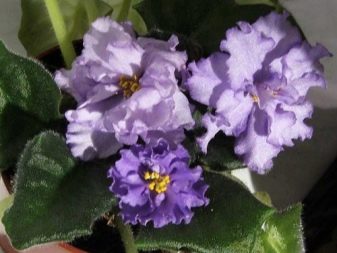
"Lilac beauty" - graceful saintpaulia with large fringed flowers of a pale lilac color and a thin rich purple edging. A characteristic feature is the 3 purple markings located in the center of the flower. The leaves have a regular rounded shape and slightly wavy edges. The variety is very decorative, with abundant and surprisingly long flowering.
"H-Lilac smiley" - beautifully flowering Saintpaulia with large, fringed amethyst flowers with bright white edging. Rounded leaves are deep dark green on the outside and reddish on the inside. Peduncles are massively formed in the center of the compact rosette.
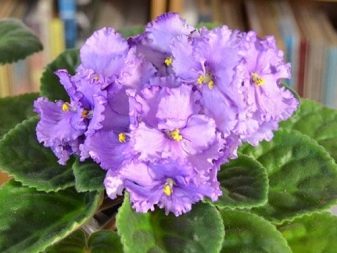
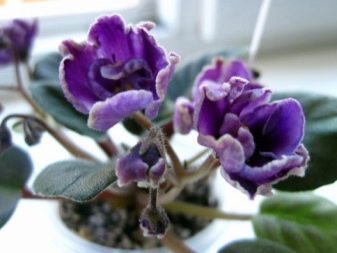
"RS-Lilac Miracle" - a very spectacular variety of Saintpaulias, which forms large double flowers of a pale purple color and a bleached edge. The diameter of the flowers can be up to 7 centimeters. The leaves are simple, rounded and uniformly green in color. The rosette diameter is about 25 centimeters. The variety is considered very unpretentious, easy to care for and reproduce.
"Lilac excitement" - graceful uzambara violet with very large fringed flowers. The two-tone petals combine dark purple and pale purple shades that harmonize well with dark emerald foliage. The leaves are reddish on the inside.
A specific feature of this variety is lush, abundant and long flowering.


"PT-Lilac distance" - an original variety with large simple or semi-double flowers. The petals are light amethyst in color with deep purple shading on the wavy edges. The plant forms a neat rosette of variegated leaves with a dark emerald core and a light beige irregular edging.
"Lilac sand" - a variety of the uzambar violet, which has an original and spectacular color. A feature of the plant is its simple, pale pink large flowers, dotted with a scattering of small dark purple splashes and framed by edging of the same shade. The leaves have a classic oval shape and color ranging from pale green to uniform dark emerald hue.
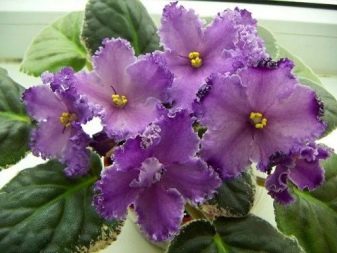
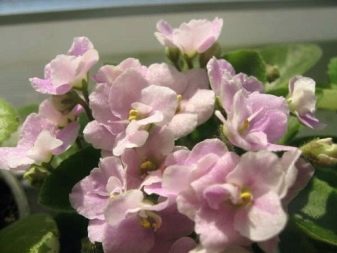
"Purple Haze" - uzambara violet, forming a beautiful and compact rosette of emerald succulent leaves with jagged edges.During the flowering period, forms multiple peduncles located in the center of the rosette. The color of the flowers ranges from pale amethyst to purple. The crimped petals have intricate wavy edges. The variety is considered demanding to care, if the rules are not followed, the plant stops blooming.
"Lilac watercolor" - a very effective variety, notable for its large voluminous flowers of a pale amethyst color with white spots shifted to the edge or to the center of the petals. A beautiful blurred transition from white to light purple creates a bright contrast against the dark green velvet leaves.
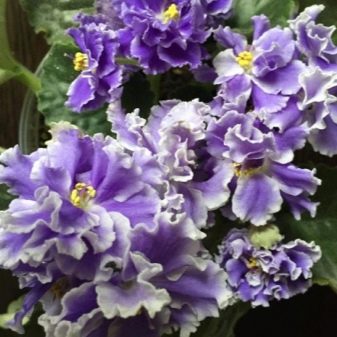
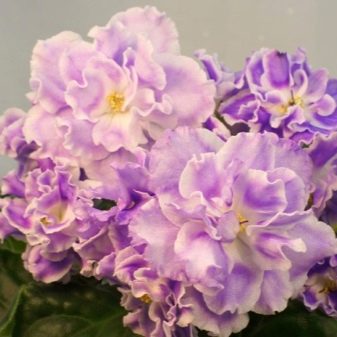
"AB-Violet Elephant" - a relatively young variety that forms a large number of buds during the flowering period. Very large double flowers are collected in dense voluminous brushes. The color of the petals is a uniform and rich indigo color with a graceful white edging on the edges.
"Lilac charm" - an unusually beautiful variety, appreciated by flower growers for its impressive decorative effect. The flowers of this uzambara violet can be either double or semi-double. The highlight of the variety is the amazing color of the petals - the smallest and numerous lilac-crimson splashes on a delicate pearl-pink background. It is noteworthy that closer to the edges of the petals, the spray thickens, turning into a beautiful dark lilac edging.


"KO-Lilac Paradise" - an amazingly beautiful variety of Saintpaulias, distinguished by a proportional compact rosette. During the flowering period, in the center of the rosette, a lush cap is formed from flowers of a delicate amethyst color. A light snow-white border is allowed on the petals. The leaves have regular rounded outlines, wavy edges and a slightly pointed tip.
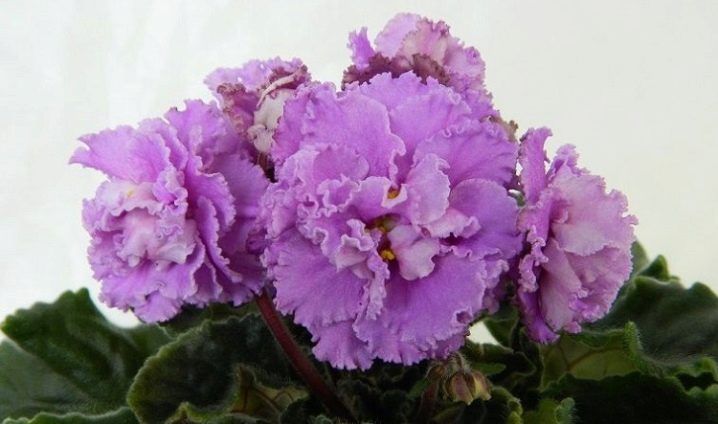
How to care?
Uzambara violets are one of the few representatives of the world of ornamental flora, capable of delighting their owner with exuberant flowering a significant part of the year. With proper care and attention, these responsive plants can bloom for up to 10 months, leaving themselves very little time to recover. In order for Saintpaulias to bloom for a long time and luxuriantly, they need to provide the following conditions:
- sufficient illumination;
- moderate watering regime;
- optimal temperature conditions;
- stable indoor air humidity.
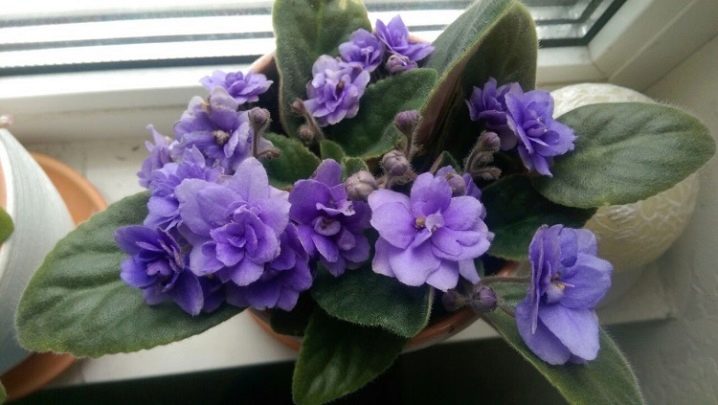
Lighting
Saintpaulias are plants that require abundant but diffused lighting. A sufficient amount of light during the day provides them with a full-fledged process of photosynthesis, due to which the Usambara violets can develop and bloom normally.
To increase the duration of flowering, experienced growers use supplementary illumination, carried out using phytolamps or fluorescent light sources.
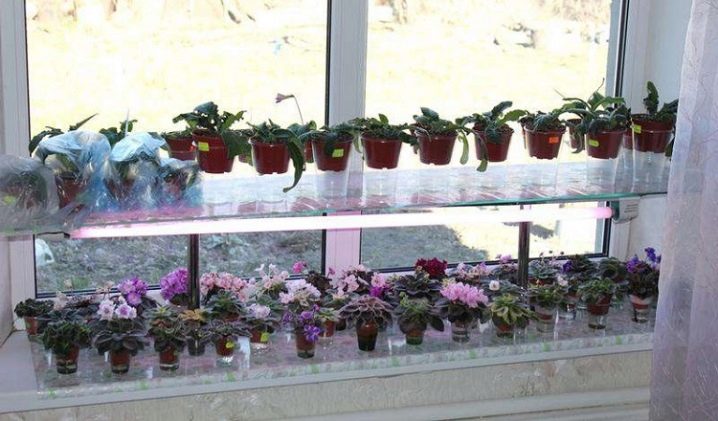
Irrigation mode
Uzambara violets tolerate mild drought rather persistently, which is less harmful for them than abundant watering. For plants to thrive, you need to provide them with regular but moderate watering. Saintpaulias are watered only with settled soft water of the same temperature as the air temperature.
The difference between air and water temperatures should be no more than 5 ° C.
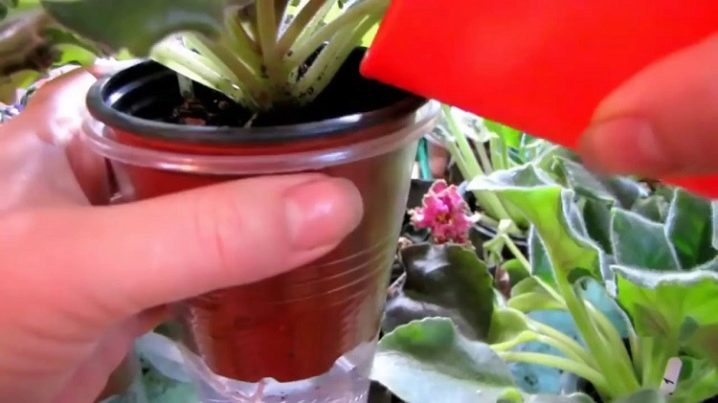
Air temperature
Saintpaulias are thermophilic plants that are painfully sensitive to drops and changes in air temperature. Experienced flower growers recommend maintaining the temperature in the room where the uzambara violets grow at a stable level of 25 ° C. Lowering the temperature to 15 ° C or raising it to 30 ° C has a detrimental effect on the state of the Saintpaulias. Under such conditions, they stop developing, stop flowering, and in some cases even die.
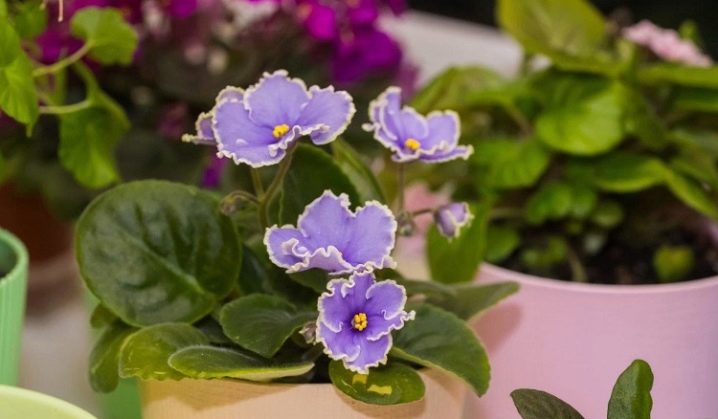
Moderate humidity
In order for Saintpaulias to fully develop and bloom for a long time, they need constant air humidity at the level of 40-50%. To maintain stable humidity, you can keep a special humidifier at home by adjusting its settings.Another way to ensure the necessary air humidity is to install a bowl or tray with water next to the saintpaulia. As it evaporates, the water will saturate the air with moisture, which in hot weather will protect the plants from drying out.
It should be noted that a lack of moisture for Saintpaulias is less harmful than an excess. With too high air humidity or waterlogging of the soil in a pot, uzambara violets are quickly attacked by rot pathogens. Their fleshy and succulent leaves are able to retain a certain amount of moisture, which is gradually consumed if necessary. However, these plants tolerate excess moisture very painfully, starting to shed flowers and rot.
In order for the lilac-purple palette of colors to please with brightness and a variety of shades, Saintpaulias need to be provided with rather abundant, but soft lighting, as well as a stable temperature regime.
In winter, to extend the flowering period, the plants are supplemented, which allows them to continue full development and formation of buds, even with a shortened daylight hours.
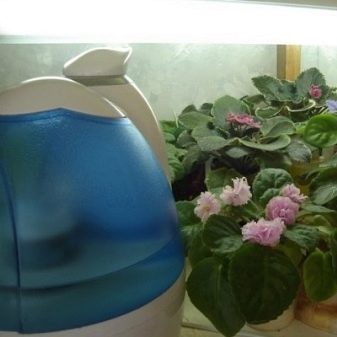
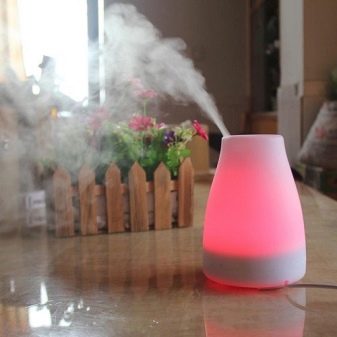
For information on how to properly water violets, see the video below.































The comment was sent successfully.